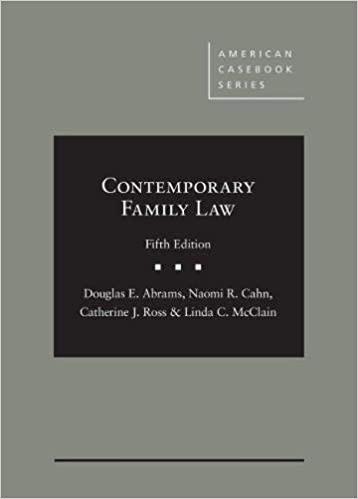Question
how to get your score lower in lopewriter IDEA Position Paper IDEA, also known as the Individuals with Disabilities Education Act, is a four-part law
how to get your score lower in lopewriter
IDEA Position Paper
IDEA, also known as the Individuals with Disabilities Education Act, is a four-part law (A-D) that mandates that the government provide education for individuals who have a disability from birth to age 21 (Wistrom, 2012). Early intervention services are available to children under the age of three who are covered by Part C of the Individuals with Disabilities Act (IDEA). Early Intervention for Babies and Toddlers, Part C of IDEA, 2010. Part C of IDEA oversees the evaluation and eligibility for early intervention, coordination with the child's family, and the crucial transition into the special education services provided by the school system if the child still qualifies for service.
Early intervention is a free or low-cost service that is provided to children who require additional academic help and behavioral assistance in order for them to succeed in a general education setting through government funding (American Speech-Language-Hearing Association). These services are for children with developmental delays or other special needs. It is possible to increase the range of health issues from birth to age 3 if necessary. the potential services that EI has to give for individuals who are eligible for the additional support include Speech-language pathologist (SLP), evaluation, and physical/occupational treatment Home visits, medical, nursing, or feeding services, hearing services, physical therapy (PT/OT), Services for hearing, vision, social work, and transportation. The five developmental dimensions of physical development, cognitive development, communication, social or emotional development, and adaptive development are the focus of these programs.
The infants and toddlers element of the IDEA, part C, includes early intervention services. The Early Intervention Program for Infants and Toddlers with Disabilities was established by Congress in 1986 (Wrightslaw, 2017). An extensive, statewide early intervention program for infants and toddlers with disabilities, from birth to age two, and their families, can be operated by states with the federal Program for Infants and Toddlers with Disabilities funding program. (Wrightslaw, 2017). States must provide that early intervention will be available to kids and families who qualify for the program in order for them to engage in it. The governor must create a lead agency to receive the grant and manage the program because a federal grant supports it. (Wrightslaw, 2017).
Early interventions are important to me because they assist me to know what to do if I have a child who requires extra help or whose development is slower than that of his or her classmates. This understanding will help me as an ECE and SPED instructor. This concept has occurred to me while I work with children that are 3 years old in a preschool. I started to fully comprehend this subject. I then understood that one of our students might be qualified for some of the early services provided under IDEA. When given new material, this student finds it difficult to adjust and follow instructions. She frequently shouts out things like "no" or lines he has remembered from movies, and we've seen that she struggles to form complete sentences while speaking to us. I can understand how early assistance could be useful in helping her acquire strong academic skills. Growing up, I received speech therapy because I struggled to pronounce some syllables. As a result, I stopped communicating for a while because I was so frustrated that no one could understand me. In order to help me with my speech at a young age and ensure that I wasn't falling so far behind others, my parents and the school determined that I needed to be placed in an early intervention program like a speech-language pathologist (SLP).
I now know what I need to look for when working with children who are behind in some areas as an ECE and SPED teacher after learning more about the IDEA, how early intervention fits into it and going through it myself. By ensuring that I understand I am aware that early intervention is an excellent strategy for giving my kids the academic support they need. A path for them to follow so they can advance and reach the necessary level.
Reference
Wistrom, E. (2012, November 15). Brief Overview of the Individuals with Disabilities Education Act. Retrieved September 24, 2018, fromhttps://www.brighthub.com/education/special/articles/25428.aspx
IDEA Part B Issue Brief: Early Intervening Services. (n.d.). Retrieved September 24, 2018, fromhttps://www.asha.org/Advocacy/federal/idea/IDEA-Part-B-Issue-Brief-Early-InterveningSer
Early Intervention (Part C of IDEA) - Articles, Cases, Resources, Info & Support from Wrightslaw. (2017, October 23). Retrieved September 24, 2018, fromhttp://www.wrightslaw.com/info/ei.index.htm
Step by Step Solution
There are 3 Steps involved in it
Step: 1

Get Instant Access to Expert-Tailored Solutions
See step-by-step solutions with expert insights and AI powered tools for academic success
Step: 2

Step: 3

Ace Your Homework with AI
Get the answers you need in no time with our AI-driven, step-by-step assistance
Get Started


